Fusion
Once again the holiday programme kicked off to a good start, with kids arriving with positive vibes and beautiful smiles. Laughter filled the marae during the whole week and it was a pleasure to see them all again. This time we were down by one kaiako, Chantal Tumahai (our hip hop instructor) and it was a bit different not to have her music playing while I was prepping the kids kai. Instead two beautiful kaiako, Miriama White and Shanita Meihana stepped in to teach the kids kapa haka, which was beautiful for my ears.
On the Wednesday, Lyndon Slater from the Department of Conservation came in to share his knowledge about the Whio (Blue Duck) and how we can help to look after them. He set up some activities for the kids and taught them very handy tips to help keep our whio safe in our rivers. A big mihi goes out to Lyndon for spending time with us all.
On the last day, the kids put on a performance for the parents to show them what they had been up to for the week. It was a good turn-out and we are looking forward to the next time they are all here again. Some of the older kids from Manawa Hou even performed a haka tautoko after our fusion kids received their awards.
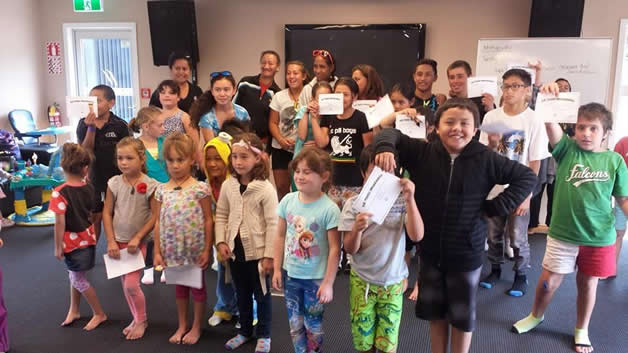
Our beautiful tamariki showing off their awards.
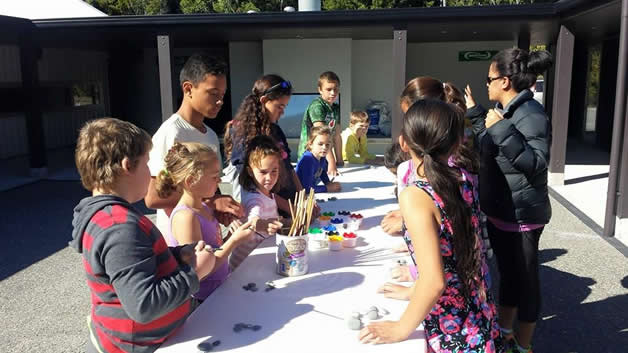
Our tamariki getting creative with the painting activities.
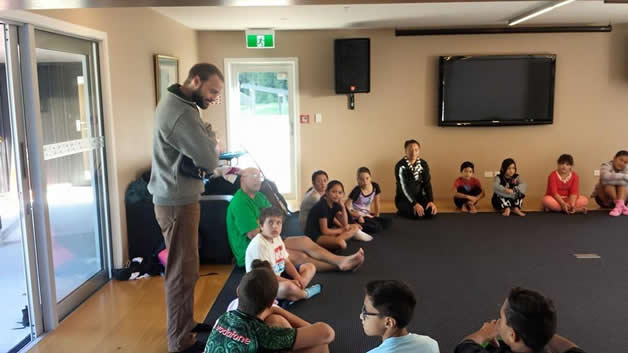
The group welcoming guest speaker, Lyndon Slater.
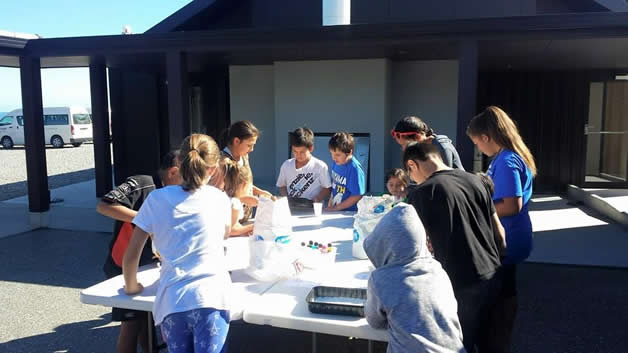
The kids making play dough.
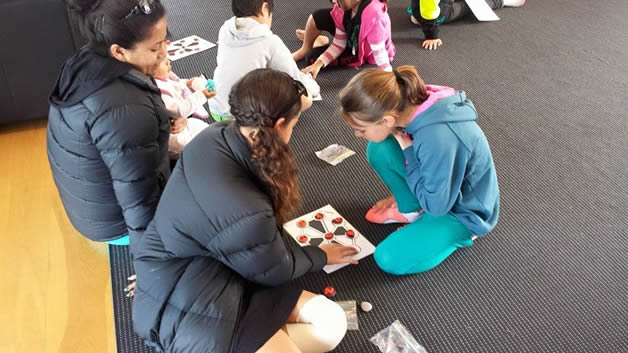
Game time.

Lyndon Slater chatting to the kids about the Whio.
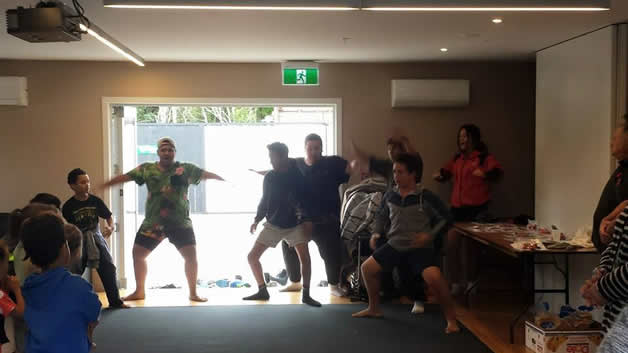
Manawa Hou rangatahi performing the haka tautoko.
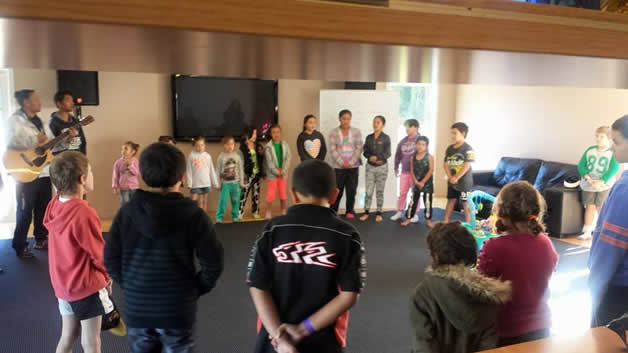
The group opening the programme with a karakia.
Taumutu hīkoi
On Monday 13 April, despite atrocious weather predictions, Taumutu whānau donned their warm gear and headed off on a hīkoi to Okains Bay.
Tamariki were very busy on the bus trip, completing an alphabet find before arriving at the museum. Once there the kaumātua, pakeke, and tamariki spent time looking at the taonga on display at Okains Bay Māori and Colonial Museum and were engrossed finding their favourite item. Murray Thacker, founder of the museum, was generous in spending time with us as well.
Fine weather prevailed, allowing us to enjoy some vigorous games around the buildings at Okains Bay.
Our kaumātua have indicated they want to return, as they needed more time to contemplate all that was on display in the museum.
From Okains Bay, we went on to visit the Akaroa Museum and we watched an informative movie. Unfortunately not all areas of the museum were open but we still gained a lot. As we approached the hilltop the bus was pelted with hail and sleet, so we were all thankful we were on the bus.
We returned home tired but enthused by all we had seen, so much so that a trip to Ōnawe Peninsula and Wainui is now on the agenda.
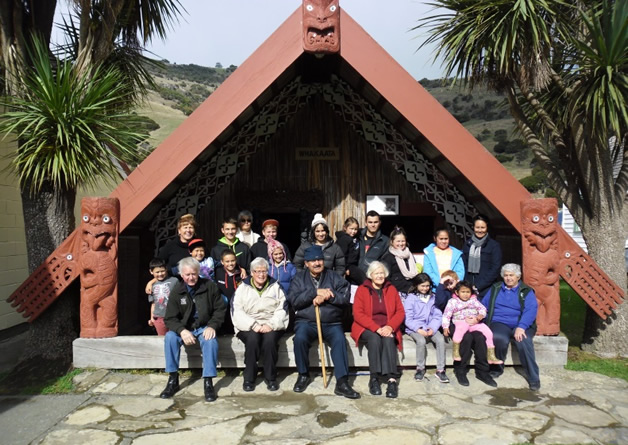
Whānau at the Okains Bay Museum.
Mahinga kai wānanga
On 27 and 28 March, we held our eeling wānanga. What a wonderful weekend we all had at the marae.
We started on Friday night with a lovely tea and after clean up, we sat and listened to Uncle David and Uncle Craig as they told us all what to do and what not to do – it was most important to listen with our ears and not our mouths.
We set off down to the creek with rugs, torches, gaffes and looked forward to toasting marshmallows on the bonfire. Tāua Daph had a senior moment though and forgot the marshmallows. We arrived back at the marae for a late supper and then went to bed at 12.30am. We didn’t see many eels but the ones that we did see did not get past our gaffes. We all went to bed tired but happy.
The next morning it was all go, as Uncle Donald rang from Greenpark to tell us to get moving as the weather looked like it was going to change. I haven’t seen kids and adults move so fast in a long time. Everyone had a job to do. We arrived at Greenpark where Uncle Donald was waiting for us and we all set out for the lake. On arrival Uncle Donald told us all what he was going to do and off we went into the lake to gather the flounder from the nets that he had put out the day before.
Uncle Donald and four of the men took the boat out to the nets. The next minute it was like the Pied Piper with the young ones following them. It was quite a sight to see them all following the boat out to pick-up the nets. We could see the odd flounder in the net from the shore where we were standing.
On reaching the shore we all gathered around the boat to see the flounders flapping about in the crates – I must say it brought back happy memories for me. After we had all had a look at the catch, Uncle Donald talked about the three different species. We gathered everyone up and went back to Uncle Donald’s for lunch; where the flounders were gutted and put back into clean crates.
He showed the children how to gut and clean the fish ready for eating. He even let the children have a go at gutting and he explained to them about all the parts of the flounder and what they lived on – it was very interesting.
Meanwhile, Uncle Pere Tainui was showing a group of children how to salt and roll the eels ready for smoking. You should have seen some of the childrens faces, they didn’t want to touch the eels or get their hands dirty – they were really funny to watch.
Before we started to pack up, Uncle Riki Dawson took the children down to the drain where he had trapped some eels for the children to gaff. After they brought the eels back to Uncle Donald’s it was getting late so we all helped to clean up and get ready for our trip back to the marae with a lot of very tired but happy children.
What a great weekend we all had. Some of the children said that their favourite part was staying on the marae, catching tuna at night, playing with the pātiki, learning about the different kinds of pātiki, moki, tōtara, mohoao, gaffing the eel, how hard to catch eels and knowing how to hold an eel down. The least favourite part was Uncle Donald ripping out the guts, falling in the water fully-clothed, making my bed, getting water in my boots and getting muddy.
Everyone wanted to do it again. I would like to acknowledge the Ngāi Tahu Fund contribution towards this project. We would also like to thank Donld Brown, Pere Tainui and Riki Dawson for sharing their mahinga kai expertise. Remember to keep an eye out for the mahinga kai web series launching in July. Nā Aunty Marg Jones.
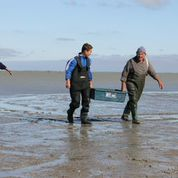
Bringing the flounder back to the shore.
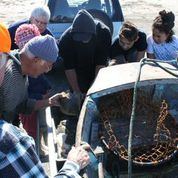
Gathering around the boat to look at the flounder.
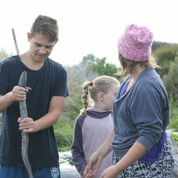
Gathering around the boat to look at the flounder.
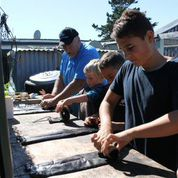
Rolling and salting the tuna.
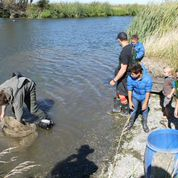
Tamariki were happy to lend a hand down on the water.
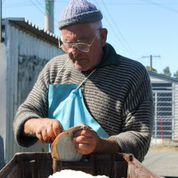
Uncle Don Brown.
He pēpi
Te Rūnanga o Koukourārata wish to welcome Karino Hesp and Kaiaio-Aoraki Hesp to the whānau. Kahutia Foster and Jasmine Hesp welcomed a son, Karino Hikurangi Wiremu Paora Hesp who was born on March 21 at Christchurch Women’s Hospital. Karino is a little brother for Kahutia Te Rangi and Mya.
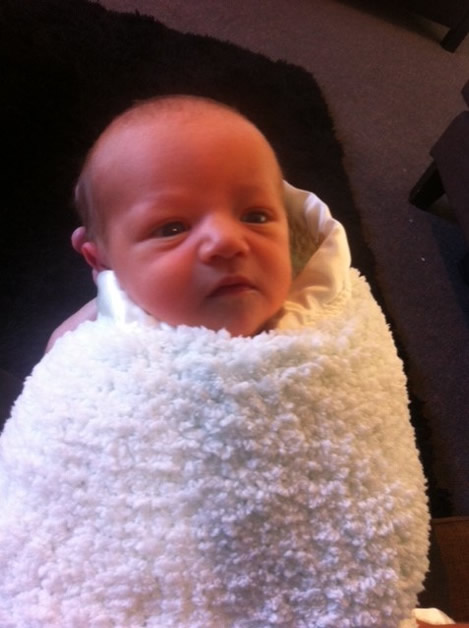
Baby Karino.
Daniel Hesp and Mataku-Ariki de-Roo also welcomed their second son Kaiaio-Aoraki Thomas Daniel Hesp on 28January in Rotorua. He is a little brother for Kelis, Tamia and Te Kaha-Huikai. Nau mai tahuti mai rā kōrua.
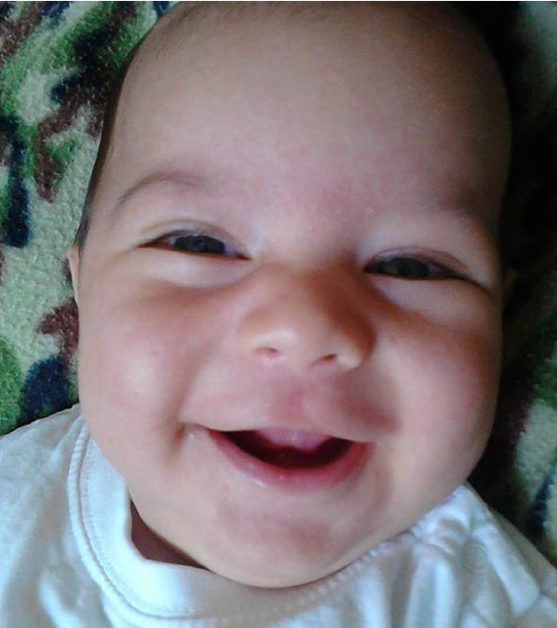
Baby Kaiaio-Aoraki.
He pēpi
A baby will make your love stronger, days shorter, nights longer, bankroll smaller, home happier, clothes shabbier, discomfort forgotten, and the future worth living for.
This pēpi, Tamati York Pearson visited our office recently with his parents, ngā tāua and aunties. He is another Ellison to join the growing hapū.
He is now eight weeks old and was born on 24 December at 10.39am weighing 3.51kgs. His mama, Robyn Meegan is Kāi Tahu and his papa, Matt Pearson is from Yorkshire England.
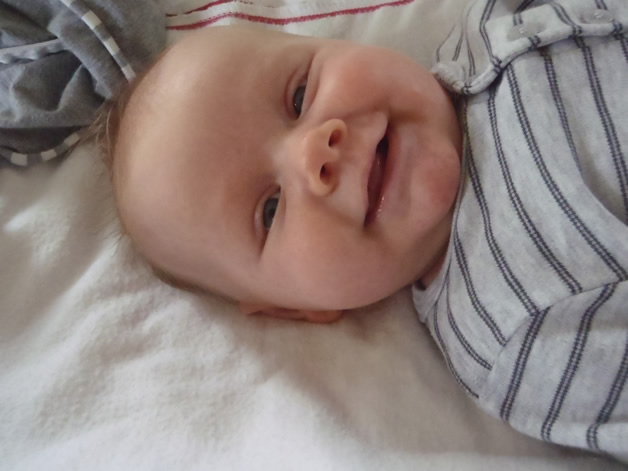
Baby Tamati.
Ngā Ruahine visit
Ōtākou was pleased to host Ngā Ruahine during their stopover in Dunedin as part of their hīkoi around Te Waipounamu. We hope to take up the tono to visit them in Taranaki in 2016, if possible.
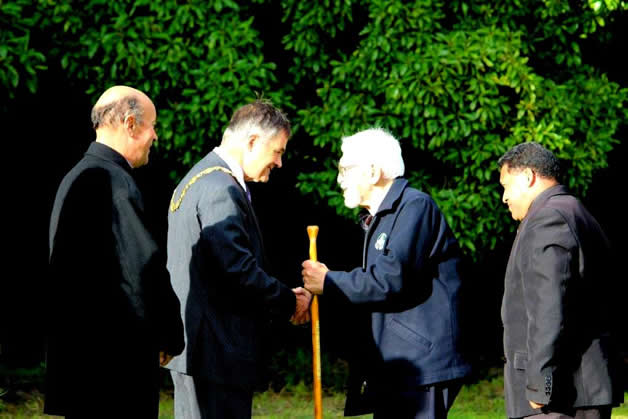
From left, Edward Ellison, Dave Cull, Ron Hudson and Hone Nuku-Tarawhiti.

Mayor, Dave Cull entering the cave.
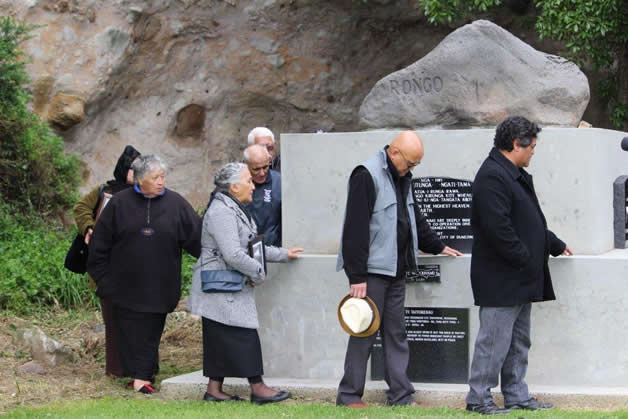
Ngā Ruahine during their visit to Rongo.
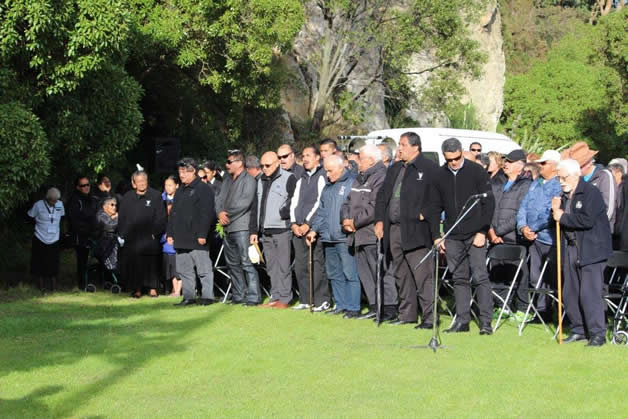
Ngā Ruahine singing a waiata.
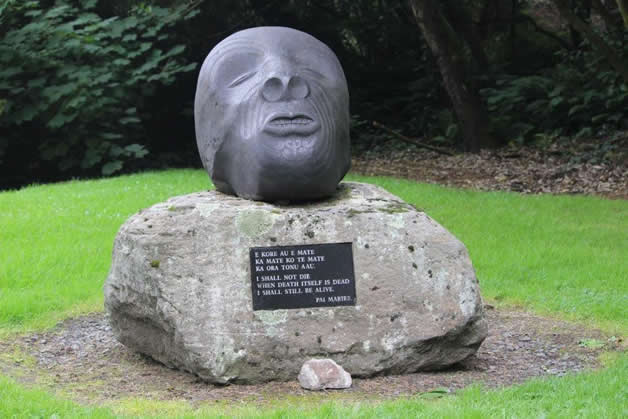
One of the memorials at the Dunedin Cemetery for the Taranaki prisoners who did not make it home.
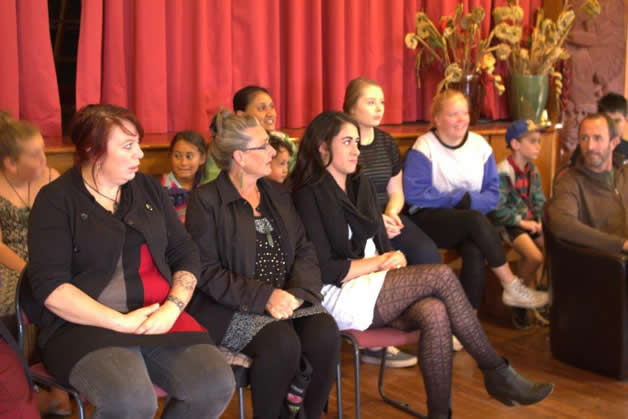
Ōtākou whānau during the pōwhiri.
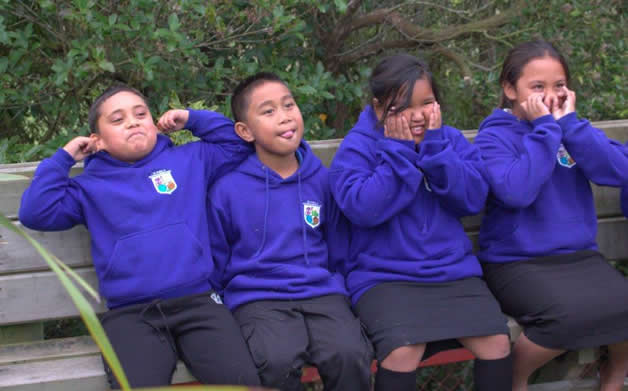
Some of the Ngā Ruahine tamariki who travelled to Te Waipounamu.
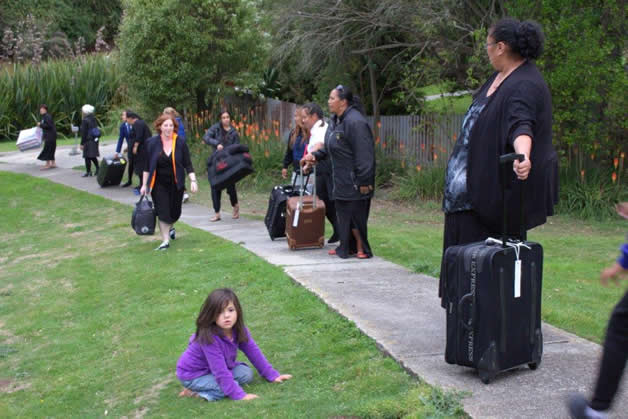
Working together to transfer the manuhiri gear up to the marae.
Kāi Tahu tamariki hui
Our recent tamariki hui was loads of fun and not just for the kids. The patapātai was a hit. The kids thoroughly enjoyed the competition and we all learnt something new. Tīma Raiona with their wicked roar stepped up to the challenge but Tīma Ngeru didn’t shy away from battle and a tie was eventually declared. The kids were pleasedto receive their prizes – a Ngāi Tahu hat or bag. Ko te tino toa ko te whanaukataka. Ka mihi ake rā ki a koe, Gael, te kaiwhakahaere o tēnei hui pai rawa atu.

From left, Te Wai Kahua Paki, Nukuroa Rikihana, Te Haumoana Cook (back), Kimihia Cook-Porter, Haeata Cook, Kaea Cook, Meia Cook, Ngakau Cook-Porter, Aniwaniwa Cook and Kiritiaho Rikihana (in front).
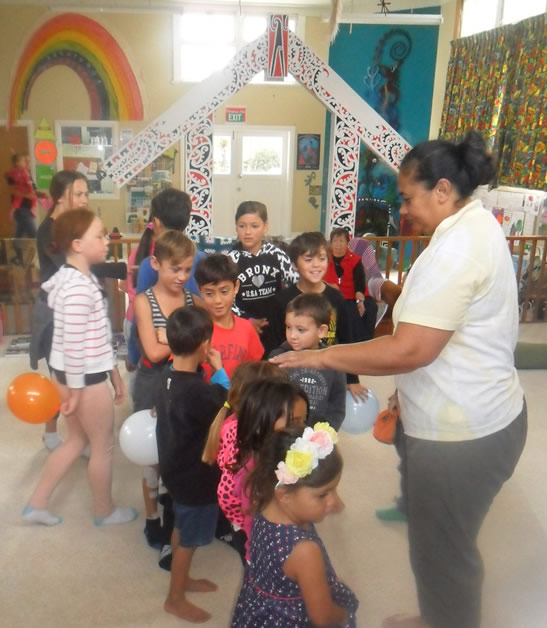
Gael helping to organise the tamariki.
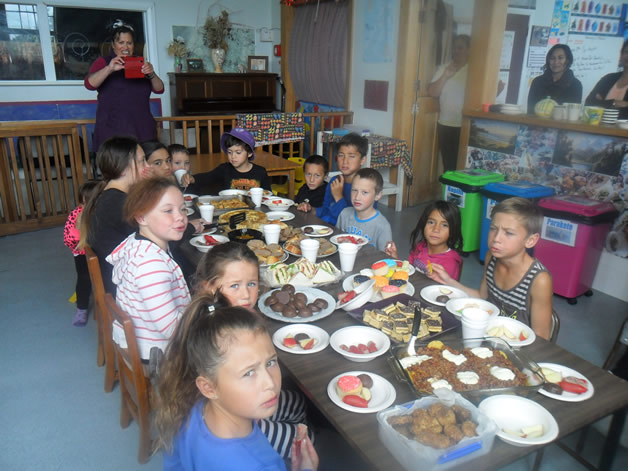
Kai time. Tāua Mariana in the background taking a snap of the tamariki.
Manawa Hou
During the school holidays I travelled as part of a group of rakatahi Kāi Tahu to Te Tai Poutini where we stayed at the beautiful Tūhuru Marae for a four-day wānaka rakatahi called, Manawa Hou. On our haereka we visited many significant sites around the rohe and took part in a lot of fun activities and games. We also learnt some of the history about the takiwā.
One of the places we visited on the wānaka was Lake Kaniere. It was there that I had my first ever go at waka ama. We also went for a quick walk to have a look at and learn some of the stories about the surrounding area. Another place we visited was the Arahura River – there we spent time searching up and down the river for pounamu, although some of us didn’t have much luck in finding any.
My favorite place was the Punakaiki Cavern. We learnt that this was one of the places our tīpuna used as a stopover point on their travels. We all went exploring deep inside the cave where it was pitch black – it was quite eerie to be somewhere that dark.
I found it interesting going to the places our tīpuna used to live and stay. It enlightened me as to how different it must have been to live in those environments and how different our lifestyle is today.
At Manawa Hou, the most enjoyable part for me was getting to meet other rakatahi Kāi Tahu who shared similar interests and hobbies to me. It was great how quickly everybody became close despite the fact that we all came from different places, and have very different backgrounds. I can’t wait to go to the next one. Nā Alex Solomon, nō Arowhenua, Waihao, Awarua me te Moeraki.

Rakatahi during their visit to the Hokitika Treetop Walkway.
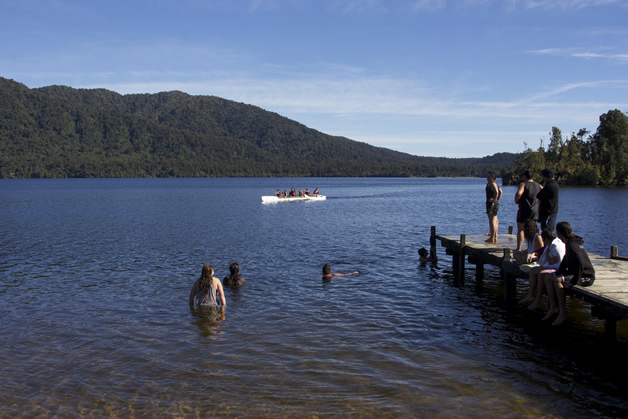
The rakatahi gave waka ama a try on Lake Kaniere.
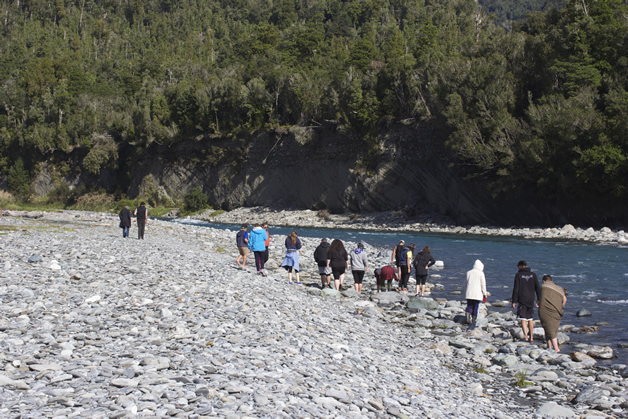
Looking for pounamu on the Arahura River.

Te rōpū o Manawa Hou walking onto Tūhuru Marae.
Hockey success
Thank you for the recent financial assistance given to Jacob Jackson and Dominic Marjoribanks in order to participate at the New Zealand vs Australia Oceania inline hockey championships held in Moe, Australia over the April school holidays. Both were recipients of the Ngāi Tahu Sporting Achievement Award.
The boys, who are cousins were fortunate to be selected in their age grades after intensive trials held in New Plymouth over one weekend. A large number of players from throughout the country attended with approximately 30-40 players in each selection pool.
We travelled to Moe, where the boys stayed with their respective teams. Dominic with the under 12s and Jacob with the under 14s. The experience has made them even more determined to continue with their sport and to carry on representing their country. The 12’s played their hearts out and ended up second to the Australians’ in close fought games. The 14’s returned home with the gold medal withJacob being a significant player in that team, assisting and scoring many goals.
Please pass on our gratitude to all at Ngāi Tahu. Without their support it would have been difficult for them to attend. Nā Maria and Janine Marjoribanks.
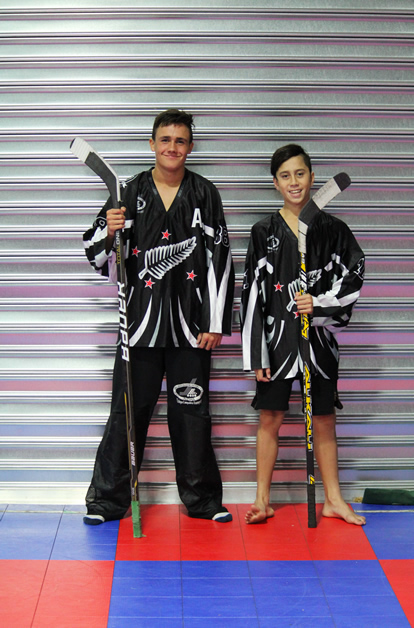
Jacob Jackson and Dominic Marjoribanks.
Encouraging new conservationists
Canterbury school children are getting behind a new conservation planting initiative aimed at encouraging kids to get involved in Nature and the environment.
Te Ara Kākāriki co-ordinator, Brooke Turner says local schools have been very enthusiastic about embracing the Kids’ Discovery Plantout Days, which began in 2014 with funding from Whakaora Te Waihora.
“We held our first planting days in Spring 2014, with two schools planting 1,000 trees; and both pupils and teachers have given us great feedback. The schools have been very willing to commit to the programme long-term.
“That’s great for us because this is all about connecting schools to their local communities and getting them outside to learn about Nature,” says Brooke.
The Kids’ Discovery Plantout project is a collaboration between: Te Ara Kākāriki, Enviroschools, Waihora Ellesmere Trust and Lincoln University, all who work within the Selwyn District to restore native vegetation communities. These areas of native plants will also contribute to creating habitat for fauna and improving waterway health, in particular Te Waihora/Lake Ellesmere.
“By working together and streamlining existing projects, we’ll make it easier for schools to incorporate conservation and biodiversity into their curriculums. The aim is to spark curiosity and inquiry in students through learning about the interconnectedness of a native ecosystem and its biodiversity values,” says Brooke.
This autumn nine schools will take part in Plantout Days, including 20 children from Lincoln Kindergarten.
“Research has shown that children who spend more time outdoors are better adjusted to do school work and live happier lives, and this project aims to provide schools with an opportunity to learn about Nature and biodiversity through hands-on experience.
“The children are also involved in ongoing monitoring and management of their site, so they’re learning about much more than just trees and planting.”
Brooke hopes the Plantout Days continue long into the future. The team is currently working with community groups to secure further support and funding.
David Murphy, Whakaora Te Waihora programme implementation manager says: “Whakaora Te Waihora is very proud of the great planting that the pupils and students are doing, and their passion for helping to restore Te Waihora/Lake Ellesmere.”

Leeston Primary pupils planting spring trees. Photograph by Adrienne Lomax.

Leeston pupils enjoying a day out planting. Photograph Adrienne Lomax.